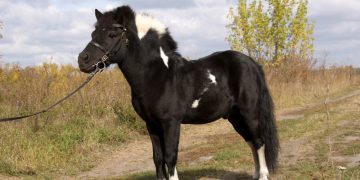Backyard pig farming is an increasingly popular and profitable venture for individuals seeking to enter the farming industry on a small scale. Raising pigs in a backyard setting allows for both sustainability and profitability, while providing an opportunity to supply fresh, high-quality pork to local markets. Whether you’re looking to start a hobby farm or turn your efforts into a business, this comprehensive guide will walk you through the steps needed to establish and grow a successful backyard pig farming operation.
1. Why Backyard Pig Farming?
A. Profit Potential of Small-Scale Pig Farming
One of the most compelling reasons to start backyard pig farming is the potential for profitability. Pigs are known for their fast growth and high feed-to-weight conversion ratio, which makes them one of the most efficient animals for meat production. With proper care and management, pigs can reach market weight (around 250-300 pounds) in as little as six months.
Small-scale pig farming can be highly profitable due to:
- Demand for Local Meat: There is growing demand for locally raised, hormone-free, and antibiotic-free pork. Consumers are increasingly interested in purchasing fresh, high-quality pork directly from local farms.
- Flexible Market Options: Pigs can be sold in various forms: live pigs, whole hogs, or processed meat products such as sausages, bacon, and ham. This flexibility gives you the ability to cater to different markets, including farmers’ markets, local restaurants, and butcher shops.
- Lower Overhead Costs: Small-scale farming typically requires less equipment and infrastructure compared to large commercial operations, making it easier to start and operate with a relatively low initial investment.
B. Sustainability and Environmental Benefits
Backyard pig farming can be a more sustainable and eco-friendly farming practice when done responsibly. By raising pigs on small plots of land, you can reduce food miles, contribute to local food systems, and engage in regenerative agricultural practices. Additionally, pigs are great at turning food scraps and waste into valuable protein, helping reduce your household’s food waste.
2. Legal Considerations and Permits
Before diving into backyard pig farming, it’s important to be aware of local regulations, permits, and animal welfare laws that may apply to your farming operation. Operating within legal boundaries will ensure that your farm is compliant with zoning laws and health standards.
A. Zoning Laws
Check with your local municipality to ensure that backyard pig farming is permitted in your area. Some neighborhoods may have zoning restrictions or regulations that limit the number of animals you can raise or the types of animals allowed on residential properties.
B. Permits and Licenses
You will likely need various permits or licenses to operate a backyard pig farm. Common requirements may include:
- Animal Husbandry Permit: Some regions require a permit for raising livestock, including pigs.
- Meat Processing License: If you plan to butcher pigs and sell the meat, you will need a license to ensure that your operation complies with food safety regulations.
- Waste Disposal Permits: As pigs produce large amounts of waste, you may need to obtain a permit to dispose of or compost manure in an environmentally responsible way.
C. Animal Welfare and Health Regulations
In addition to the permits, ensure that your pig farming practices meet the required animal welfare standards. This includes providing appropriate housing, feed, and healthcare to prevent disease outbreaks and ensure the well-being of your pigs.
3. Choosing the Right Pig Breed for Your Backyard Farm
The breed of pig you choose will play a significant role in the success of your farming operation. There are several pig breeds suited for small-scale farming, each with unique characteristics.
A. Commercial Breeds
- Yorkshire: Known for rapid growth, high feed conversion efficiency, and high-quality pork, Yorkshire pigs are ideal for farmers focused on meat production.
- Landrace: With their ability to produce large litters and their excellent mothering ability, Landrace pigs are often used for breeding purposes, especially in commercial operations.
B. Heritage Breeds
Heritage breeds are ideal for small-scale and sustainable farming operations due to their natural ability to breed, slower growth rates, and superior meat quality. Some popular heritage breeds include:
- Berkshire: Berkshire pigs are known for their marbled pork, which results in tender, flavorful meat. They are hardy, easy to handle, and well-suited for small farms.
- Tamworth: Tamworth pigs are excellent foragers and thrive in outdoor settings. They are known for producing high-quality bacon and pork with a distinct flavor.
- Gloucestershire Old Spot: This breed is prized for its high-quality meat and docile nature. It’s a great choice for those looking to focus on premium, sustainably raised pork.
- Kunekune: Kunekune pigs are small, friendly pigs that are ideal for small backyard farms with limited space. Their size makes them easier to manage, and they are great for breeding or as a niche product for local markets.
Choosing the right breed depends on your goals (e.g., meat production vs. breeding) and the specific needs of your farm, such as space, climate, and the scale of your operation.
4. Setting Up Your Backyard Pig Farm
The physical setup of your farm is essential for your pigs’ health and well-being, as well as for the productivity of your farming operation. Here’s how to create an optimal environment for your pigs:
A. Housing and Shelter
Pigs need a safe and comfortable shelter to protect them from the elements and predators. The shelter should include:
- Adequate Space: Ensure your pigs have enough room to move around comfortably. Each pig should have at least 8-10 square feet of indoor space, and if you plan to keep multiple pigs, provide additional space for each one.
- Ventilation: Proper ventilation is essential to prevent the buildup of ammonia and other gases that could harm your pigs’ respiratory health.
- Protection from Weather: Pigs are sensitive to both heat and cold. In hot climates, provide ample shade and fresh water. In cold climates, ensure that the shelter is insulated and draft-free to protect your pigs during winter.
- Bedding: Use straw, hay, or wood shavings as bedding to keep the shelter clean and dry. Replace bedding regularly to maintain a healthy environment.
B. Fencing and Outdoor Space
Pigs are curious animals that enjoy rooting and foraging. Fencing is crucial to keeping them contained and protected from predators. Use sturdy fencing (at least 4 feet tall) and ensure that it is secure at the bottom to prevent pigs from digging their way out.
If you have space, consider creating an outdoor pen or pasture where pigs can roam and forage. This not only provides them with a more natural environment but also helps to reduce feed costs as pigs can forage for plants, roots, and insects.
C. Waste Management
Managing pig waste is crucial for maintaining a clean and healthy farm. Pigs produce significant amounts of manure, which can be used as a valuable resource for fertilizing crops. Consider setting up a composting system or establishing a manure management plan to dispose of waste responsibly.
5. Feeding and Nutrition for Pigs
Proper nutrition is essential for the healthy growth and development of your pigs. While pigs are omnivores, providing them with a balanced diet that meets their specific nutritional needs is key to ensuring their health and maximizing their growth rate.
A. Starter Feed for Piglets
Piglets should be fed a high-protein starter feed during the first 8 weeks of life to promote rapid growth. Look for starter feeds with around 18-20% protein content.
B. Grower Feed for Young Pigs
After the first 8 weeks, pigs should transition to a grower feed, which contains 14-16% protein. This feed supports continued growth while keeping them lean.
C. Finisher Feed for Market Pigs
Pigs that are nearing market weight (around 250 pounds) should be fed finisher feed, which contains 12-14% protein. Finisher feed helps prepare them for slaughter and ensures high-quality meat production.
D. Supplementing with Forage
If your pigs are free-range or have access to pasture, they will enjoy foraging for grasses, roots, and insects. While this helps supplement their diet, it’s still important to provide supplemental feed (grains and protein) to ensure they receive all the necessary nutrients.
E. Water
Pigs require access to fresh, clean water at all times. Make sure that water is easily accessible, especially during hot weather, as pigs can become dehydrated quickly.
6. Health Management and Disease Prevention
Maintaining the health of your pigs is crucial for a profitable and sustainable operation. Implement the following health management practices:
A. Vaccinations and Health Checkups
Consult with a veterinarian to develop a vaccination schedule for your pigs. Common vaccinations include those for diseases like swine flu, E. coli, and foot-and-mouth disease. Regular health checkups will help detect any potential issues early.
B. Parasite Control
Pigs are susceptible to both internal and external parasites, such as worms, lice, and mites. Regular deworming and parasite treatments will help keep your pigs healthy.
C. Sanitation and Biosecurity
Maintain high levels of sanitation to prevent disease outbreaks. This includes cleaning the shelter regularly, disinfecting equipment, and practicing good biosecurity measures, such as limiting contact with other farms and animals.
7. Marketing Your Backyard Pig Farm
Once your pigs are ready for market, you’ll need a strategy to sell your products. Here are some key marketing options for backyard pig farmers:
A. Farmers’ Markets
Farmers’ markets are an excellent venue for selling fresh pork directly to consumers. This allows you to establish relationships with customers and showcase the quality of your meat.
B. Local Butchers and Restaurants
Build relationships with local butchers, chefs, and restaurants who are interested in sourcing fresh, locally-raised pork. Many restaurants are eager to offer premium-quality meat to their customers.
C. Direct-to-Consumer Sales
Consider offering whole or half pigs to customers who are looking for bulk purchases. You can also sell individual cuts of meat or value-added products such as sausages, bacon, and ham.
D. Online Platforms
With the rise of direct-to-consumer sales online, consider using social media platforms or e-commerce websites to market your pigs and pork products. This can help expand your reach beyond your local area.
8. Overcoming Challenges in Backyard Pig Farming
While backyard pig farming offers many benefits, it comes with its share of challenges:
- Predators: Pigs are vulnerable to predators, such as coyotes or wild dogs. Strong fencing and secure housing are essential to protect your animals.
- Weather Conditions: Extreme temperatures can affect the health and comfort of your pigs. Be prepared to provide proper shelter and shade during hot weather and insulation during the winter months.
- Regulatory Compliance: Navigating local regulations and obtaining the necessary permits can be time-consuming. Make sure to stay informed about zoning laws, animal welfare requirements, and health regulations.
Conclusion
Backyard pig farming can be a highly profitable and rewarding business, especially when done with care, knowledge, and a strong business plan. By selecting the right breed, creating a sustainable farming environment, providing proper nutrition, and implementing good health management practices, you can build a successful small-scale pig farming operation that meets the growing demand for locally sourced, high-quality pork. Whether you’re looking to start a hobby farm or turn your backyard operation into a full-fledged business, this guide provides you with the knowledge to turn your small-scale efforts into a thriving pig farming venture.

























